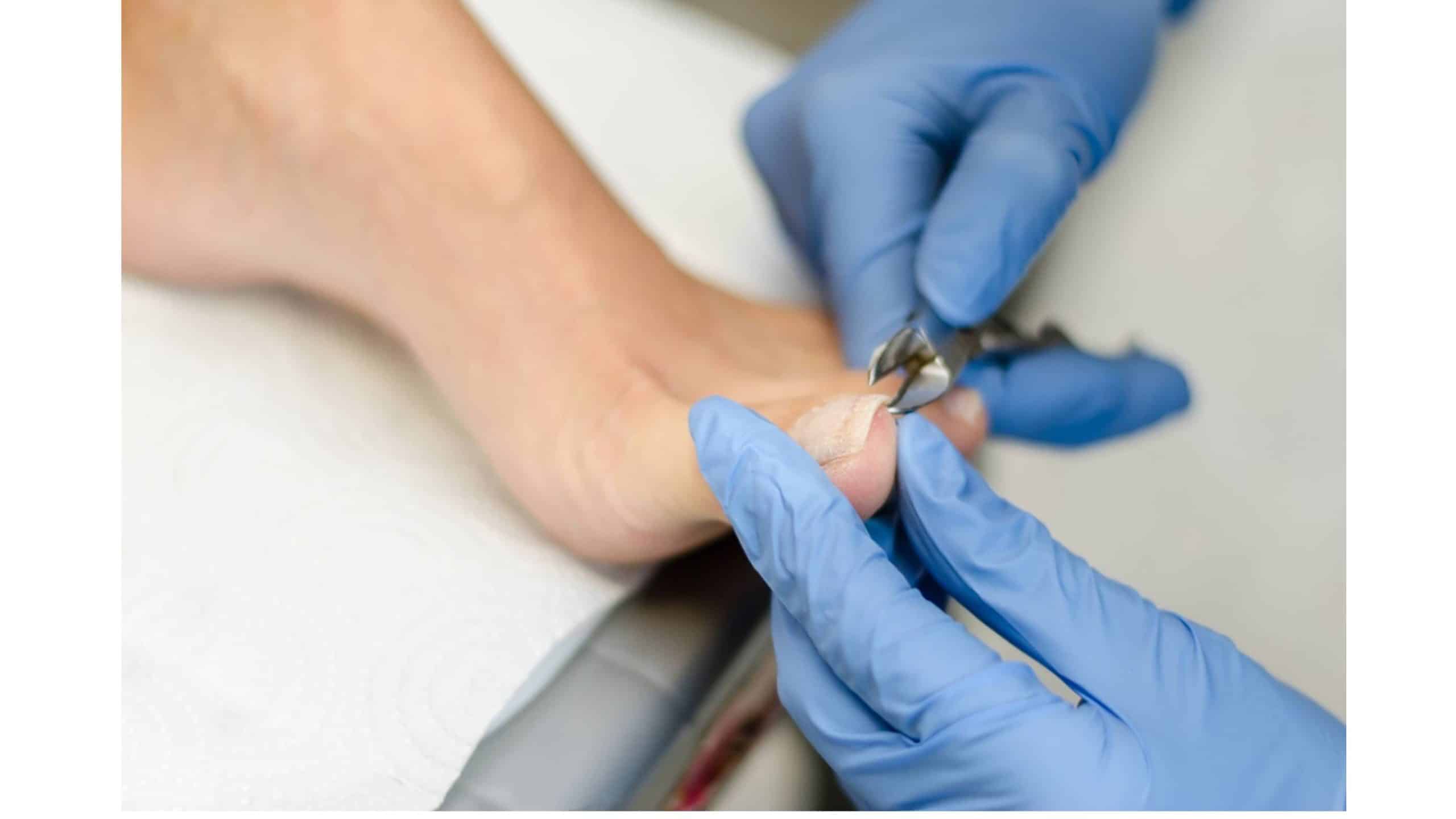In this website segment, we want to present the career path of How to Become a Podiatrist. You can learn What a Podiatrist Does. Additionally, in our section on Personal finance, you can learn How Much a Podiatrist Costs and How Much a Podiatrist charges to Cut Toenails.
A podiatrist is a medical professional specializing in diagnosing, treating, and preventing foot-related diseases, injuries, and conditions. Podiatrists provide comprehensive medical and surgical care for the feet and lower legs. They diagnose and treat ailments such as plantar fasciitis, bunions, neuromas, ingrown toenails, heel pain, flat feet, and hammertoes.
What is a podiatrist?
Podiatrists are medical professionals who specialize in treating foot, ankle, and related leg structures. They also prevent, diagnose, and treat additional foot problems such as ankle and lower limb conditions, nerve damage in the feet, and foot sports injuries.
They can also provide medical advice on issues such as proper fitting of shoes or orthotics; they may even address biomechanical problems that can cause discomfort or injury to the lower limbs. A podiatrist is trained in the anatomy of the foot and lower leg; they learn how to properly evaluate the range of motion of joints in both upper and lower extremities; they understand how different movements affect gait, balance, and muscle coordination; they also possess knowledge about nutrition-related foot problems. In addition to diagnosing diseases, these professionals are skilled at performing surgery and providing preventive care by helping patients choose supportive footwear that reduces stress on their feet.
Are podiatrists expensive?
Yes, podiatrists are expensive because their hourly rate of $73 is higher than average. The annual salary of $150,000 is almost twice the average US salary.
Why is it necessary to see a podiatrist?
First, the difficulty might signify that something is wrong and that action must be taken before the situation becomes intractable. Why do people with diabetes have foot problems?
Because diabetes isn’t an autoimmune illness, diabetics’ bodies can’t deal with or fight off infections as effectively as yours can. Not regulating their blood sugar levels can impair every organ system in their body, from their eyes to their feet.
Numbness, tingling, and burning sensations are signs of something wrong. If you have these symptoms and haven’t seen a doctor or podiatrist, you should.
How Much Does a Podiatrist Cost?
A podiatrist costs $73 per hour in the US, and one hour of consultation usually costs $60 to $80. So, on average, you will need around 5-6 visits or about $400 to fix foot issues.

Seeing a podiatrist can be crucial to staying healthy and caring for your feet. A podiatrist is a medical practitioner specializing in diagnosing and treating conditions related to the feet and lower limbs, such as bunions, corns, ingrown toenails, calluses, heel pain, and other injuries. These medical professionals may also care for broken bones and fractures in the foot or ankle area. The cost of seeing a podiatrist can vary depending on where you live, what type of treatment is needed, and other factors.
Podiatrist visit costs by State in 2023.
Let us see the average Podiatrist visit costs by State:
| Average Cost of Podiatry Visits by State in $ | Minimum $ | Maximum $ |
|---|---|---|
| Alabama | 75 | 110 |
| Alaska | 101 | 149 |
| Arizona | 84 | 125 |
| Arkansas | 74 | 109 |
| California | 92 | 137 |
| Colorado | 82 | 120 |
| Connecticut | 89 | 132 |
| Delaware | 87 | 128 |
| D.C. | 86 | 127 |
| Florida | 82 | 121 |
| Georgia | 77 | 114 |
| Hawaii | 78 | 115 |
| Idaho | 76 | 112 |
| Illinois | 86 | 126 |
| Indiana | 78 | 115 |
| Iowa | 71 | 105 |
| Kansas | 74 | 109 |
| Kentucky | 75 | 111 |
| Louisiana | 84 | 123 |
| Maine | 76 | 112 |
| Maryland | 89 | 131 |
| Massachusetts | 91 | 135 |
| Michigan | 84 | 124 |
| Minnesota | 95 | 140 |
| Mississippi | 76 | 112 |
| Missouri | 75 | 111 |
| Montana | 78 | 115 |
| Nebraska | 76 | 113 |
| Nevada | 81 | 119 |
| New Hampshire | 81 | 119 |
| New Jersey | 98 | 144 |
| New Mexico | 75 | 110 |
| New York | 92 | 136 |
| North Carolina | 82 | 121 |
| North Dakota | 82 | 121 |
| Ohio | 77 | 114 |
| Oklahoma | 82 | 121 |
| Oregon | 84 | 124 |
| Pennsylvania | 87 | 128 |
| Rhode Island | 92 | 136 |
| South Carolina | 79 | 116 |
| South Dakota | 74 | 109 |
| Tennessee | 74 | 110 |
| Texas | 80 | 118 |
| Utah | 83 | 123 |
| Vermont | 82 | 121 |
| Virginia | 80 | 118 |
| Washington | 89 | 131 |
| West Virginia | 80 | 118 |
| Wisconsin | 84 | 124 |
| Wyoming | 82 | 121 |
In the United States, the average hourly rate for a podiatrist typically ranges from $60 to $80 per hour. This amount will depend on your region and any additional services required during your visit. For example, if X-rays are needed during your appointment or specialty treatments are used to address specific issues with your feet or ankles, this could increase the cost of care. Additionally, some insurance policies may cover all or part of the costs associated with podiatrist visits. Hence, checking with your provider for coverage details before scheduling an appointment is essential.
On average, patients should expect their condition to require around 5-6 visits to completely resolve it, which means they will likely spend between 300 and 400 dollars overall. Of course, there are always exceptions to this rule—you might need fewer visits depending on how quickly you respond to treatment or more if you have an incredibly complicated issue—but most cases fall within this range regarding cost.
Since many people don’t have experience visiting a podiatrist before they go in for their first appointment, it’s also essential for them to factor in time for paperwork that needs to be filled out before being seen by a doctor, as well as any follow-up appointments that may be necessary after initial treatment has been given. All these elements contribute to the overall cost and how long it will take before someone can fully resolve their issue and return to everyday activities without discomfort or difficulty walking or running like normal again.
While some individuals prefer self-treatment methods such as putting moleskin on their feet at home or soaking them in warm salt water solutions, etc., these approaches aren’t recommended by medical professionals as they often don’t take into account underlying causes that need addressing for lasting relief from pain and discomfort associated with certain conditions related footwear wear patterns, etc. Therefore consulting with a qualified professional like a Podiatrist is essential if you want optimal results when dealing with various foot-related ailments. Ultimately, paying attention to your feet’ health can help keep costs down over time, so make sure to check prices beforehand and take good care of them so that more serious issues don’t arise later down the line!
It all relies on your health insurance or lack thereof, your podiatrist’s knowledge, and the reason for your appointment. On the other hand, a quick visit to a podiatrist can cost anything from $60 to $400. Feet health is essential. So, we should consult podiatrists. When considering the cost of a podiatrist visit, remember that you’ll be receiving superior care, which is sometimes more expensive than a visit to your primary care physician. Dermatologists, chiropractors, and allergists are further examples of specialty care traders.
Podiatrists are known as podiatrists who specialize in foot and lower limb concerns, including injuries and persistent health difficulties. To practice podiatric medicine, one must acquire a DPM (health practitioner of podiatric medicine) degree.
The American Board of Podiatric Medicine issues licenses to podiatrists who meet specific requirements. A podiatrist must also be licensed to practice within the nation where they work. All physicians, for example, may need to reapply for their licenses every few years. They should also keep up-to-date with current podiatry methods and studies by attending unique seminars or demonstrating their interest in continuing training procedures.
Podiatrist and the price per appointment
The price per appointment for a podiatrist has decreased. Usually, it ranges from $50 to $100.
Each podiatrist’s charge varies depending on how many cases he sees, just as each patient is unique. As predicted, the price phase is between $60 to $400. Your physician’s website, their professional reports, and the contributors you may require might all impact your cost. When you have medical health insurance, your coverage must, at the very least, pay a portion of the very last invoice, which is valuable knowledge. This is especially true if you do not have medical health insurance and a cash payout for the procedure. Your invoice will be more accurate because you’re covering the entire cost.
If you require a different charge after your first session in the future, your subsequent few sessions at the podiatrist may be the facility offered. Again, you may be charged differently depending on the severity of your condition and the treatment options advised by your physician. It should also be noted that the method doesn’t always influence the price as much as the treatment area.
While ingrown toenails and calluses are elimination services, the cost will no longer be the same for the two conditions, which are pretty different. This is because ingrown toenails are more challenging to treat than normal toenails.
To clarify why Hippocratic Solutions argues that the podiatrist must utilize surgical methods to remove ingrown toenails.
Ingrown toenail eradication degrees often cost from $250 to $500. On the other hand, calluses are a lot easier for a podiatrist to cure, so the patient will only be charged about $90.
The American Podiatric Medical Association states that clinical health insurance plans often cover podiatrists’ foot and ankle care. In addition, personal and governmental health insurance policies cover most podiatrists. All insurance policies may not cover all podiatrists; nevertheless, in the current world, it’s more important than ever to communicate with your group podiatrist regularly rather than just organizing a meeting to determine if the management center accepts your insurance plan or not. Double-checking your insurance coverage’s foot and ankle benefits is also advisable.
It’s usually possible to do this by phoning your insurance company or logging into your customer portal on the insurance company’s website. In addition, medicare often covers the following services if they are judged medically necessary:
Patients with chronic foot problems include diabetes, venous inflammation, chronic renal disease, cancer, or other chronic diseases. They have individualized shoe inserts for diabetics or healing shoes for people with diabetes. Diabetic patients who like numb ankles and feet. To safeguard their health, patients who wish to have their toenails clipped by a trained professional.
How much does a podiatrist charge to cut toenails?
The podiatrist may charge up to $70 to cut toenails. However, the cost of surgical procedures for ingrown toenails can range between $250 and $500.
Please read our article to learn how much podiatrists charge to cut toenails.
- Facebook Ads to Get Followers! - December 27, 2024
- ClickUp vs. Slack - December 20, 2024
- Mastering E-Commerce Analytics: A Blueprint for Success






